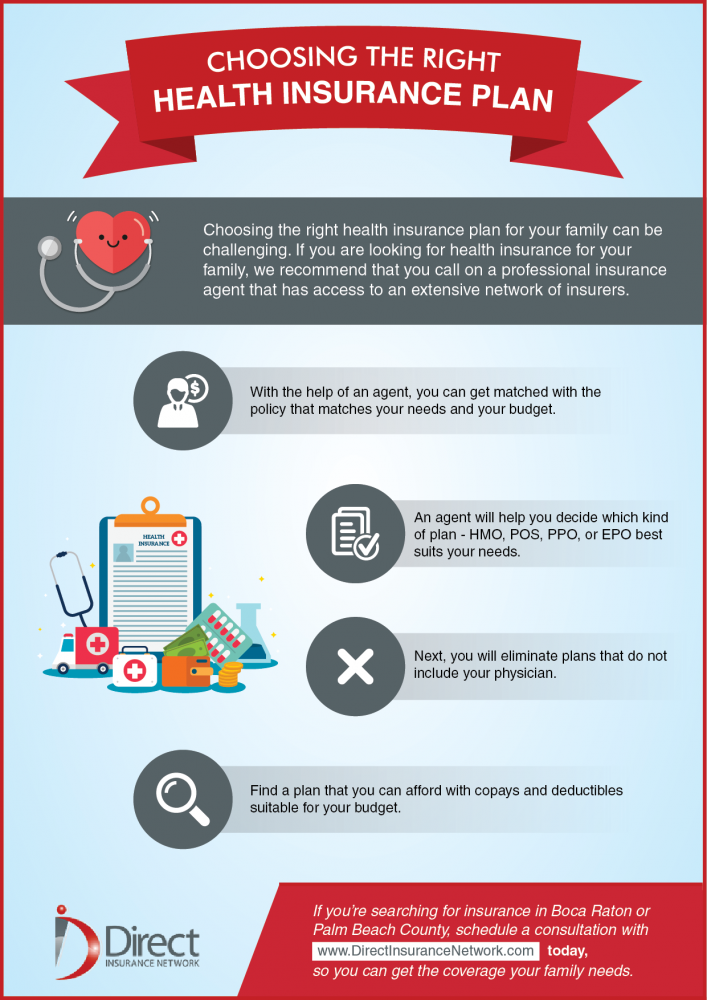To choose the right health insurance plan for your family, assess your specific healthcare needs and budget. Compare plan options, including premiums, deductibles, and coverage networks.
Selecting the best health insurance plan for your family can feel overwhelming. Various factors, such as your family’s health needs and financial situation, play a crucial role in this decision. Understanding the types of plans available, including Health Maintenance Organizations (HMOs) and Preferred Provider Organizations (PPOs), is essential.
Evaluate the monthly premiums, deductibles, and out-of-pocket costs to find a balance that fits your budget. Additionally, ensure that your preferred healthcare providers and necessary medications are covered. By taking the time to analyze your options, you can secure a plan that provides adequate protection and peace of mind for your family’s health.
Assessing Your Family’s Health Needs
Choosing the right health insurance plan starts with understanding your family’s health needs. Every family is unique. Knowing what your family requires helps you find the best plan. Consider current health conditions, future medical needs, and lifestyle choices. This guide will help you assess these needs effectively.
Identifying Specific Health Requirements
Start by listing your family’s health needs. Include both physical and mental health. Understanding these needs helps in selecting the right coverage.
- Current medical conditions
- Regular medications
- Expected surgeries or treatments
- Routine check-ups and preventive care
Next, evaluate the frequency of healthcare usage. Ask these questions:
- How often do family members see a doctor?
- Are there any specialist visits?
- What type of therapy or counseling is needed?
Gather this information to narrow down suitable insurance plans. This step is crucial for making an informed choice.
Considering Age And Medical History
Age plays a significant role in health needs. Younger children may require different coverage than adults. Consider these factors:
| Age Group | Common Health Needs |
|---|---|
| Infants | Vaccinations, pediatric visits |
| Children | Routine check-ups, emergencies |
| Adults | Chronic conditions, preventive screenings |
| Seniors | Specialist care, long-term care |
Medical history is equally important. Review past illnesses, surgeries, or chronic conditions. This information helps predict future healthcare needs.
Combining age and medical history gives a clearer picture of your family’s health requirements. Use this insight to choose an appropriate health insurance plan.

Credit: www.livemint.com
Understanding Health Insurance Terms
Health insurance can be confusing. Many terms sound similar but mean different things. Understanding these terms helps you make smart choices. This section explains key terms in health insurance. Knowing these terms will empower you to choose the right plan for your family.
Deciphering Premiums, Copayments, And Deductibles
Three main terms come up in health insurance: premiums, copayments, and deductibles. Each plays a role in your overall costs.
| Term | Description |
|---|---|
| Premium | The amount you pay monthly for your insurance. |
| Copayment | A fixed amount you pay for a medical service at the time of the visit. |
| Deductible | The amount you pay for services before insurance starts to pay. |
Here’s how they work:
- You pay your premium every month, regardless of usage.
- When you see a doctor, you might pay a copayment.
- Before your insurance kicks in, you must meet your deductible.
Hmos Vs Ppos: Knowing The Difference
Health Maintenance Organizations (HMOs) and Preferred Provider Organizations (PPOs) are two common types of health plans.
| Feature | HMO | PPO |
|---|---|---|
| Network | Requires using in-network providers | Allows out-of-network providers |
| Cost | Generally lower premiums and costs | Higher premiums and costs |
| Referrals | Need a referral to see a specialist | No referral needed for specialists |
Choosing between an HMO and PPO depends on your family’s needs:
- If you prefer lower costs and do not mind a limited network, consider an HMO.
- If you want flexibility and access to a wider range of doctors, a PPO may be better.
Analyzing Plan Types And Coverage Options
Choosing the right health insurance plan can be challenging. Understanding different plan types helps in making informed decisions. Each plan type offers unique features and coverage options. Analyze these to find what best fits your family’s needs.
Comparing Hmos, Ppos, Epos, And Pos Plans
Different health insurance plans come with specific rules and benefits. Here’s a quick comparison of popular types:
| Plan Type | Description | Flexibility | Cost |
|---|---|---|---|
| HMO | Requires members to choose a primary care doctor. | Low flexibility; limited to network providers. | Generally lower premiums and out-of-pocket costs. |
| PPO | Offers a wider choice of doctors and specialists. | High flexibility; can see any provider. | Higher premiums; out-of-network costs apply. |
| EPO | Similar to PPO but does not cover out-of-network care. | Moderate flexibility; in-network only. | Lower premiums; no out-of-network coverage. |
| POS | Combines features of HMO and PPO. | Moderate flexibility; primary care doctor needed. | Costs vary based on in-network or out-of-network. |
Evaluating Coverage For Specialists And Procedures
Understanding coverage for specialists and procedures is essential. Each plan type has different rules for seeing specialists:
- HMO: Requires referrals from primary care doctors for specialists.
- PPO: No referrals needed; can see specialists anytime.
- EPO: Specialists available, but must be in-network.
- POS: Referrals needed, but can see out-of-network specialists at a higher cost.
Check the list of covered procedures. Verify if your family’s doctors are in the network. Review the costs associated with each procedure. This helps avoid unexpected bills.

Credit: directinsurancenetwork.com
The Importance Of Provider Networks
Choosing the right health insurance plan involves understanding provider networks. Provider networks include doctors, hospitals, and clinics that accept your plan. Using in-network providers often leads to lower costs. Selecting a plan with a good network can save you money.
Checking If Your Preferred Doctors Are In-network
Before selecting a health insurance plan, check if your preferred doctors are in-network. Here’s how:
- Visit the insurance company’s website.
- Use their provider search tool.
- Enter your doctor’s name or specialty.
- Confirm if they are listed as in-network.
In-network doctors usually offer lower co-pays and deductibles. This can significantly reduce your out-of-pocket expenses. Always verify the network status before making a decision.
Understanding Out-of-network Costs
Choosing an out-of-network provider can lead to higher costs. Here are some key points:
| Cost Factor | In-Network | Out-of-Network |
|---|---|---|
| Co-Pay | Lower | Higher |
| Deductible | Lower | Higher |
| Coverage | More | Less |
Out-of-network providers may charge more than your plan covers. Always check your plan’s details to understand these costs. It helps avoid unexpected bills.
Calculating Total Costs
Understanding the total costs of health insurance is crucial for families. It helps in making informed decisions. Costs involve premiums, deductibles, and out-of-pocket expenses. Each aspect plays a role in your overall budget. A clear breakdown can save money and avoid surprises.
Estimating Out-of-pocket Expenses
Out-of-pocket expenses include costs you pay directly. These can vary based on your plan. Common out-of-pocket costs are:
- Co-pays: Fixed amounts for doctor’s visits.
- Coinsurance: A percentage of costs after the deductible.
- Prescription costs: Amounts you pay for medications.
Estimate these costs based on your family’s health needs. Consider how often you visit doctors. Use a table to summarize potential expenses.
| Expense Type | Estimated Cost |
|---|---|
| Co-pays (3 visits) | $60 |
| Coinsurance (after deductible) | $200 |
| Prescriptions (monthly) | $50 |
How To Factor In Premiums And Deductibles
Premiums are monthly payments for your insurance. Deductibles are amounts you pay before coverage starts. Calculate these to see total costs for your family.
- Identify the monthly premium. Multiply by 12 for annual cost.
- Determine the deductible amount.
- Combine both amounts for total basic costs.
Example:
- Monthly premium: $300
- Annual premium: $300 x 12 = $3,600
- Deductible: $1,500
- Total cost: $3,600 + $1,500 = $5,100
This total helps you understand your financial commitment.
Exploring Hsas And Fsas
Choosing the right health insurance plan for your family can be overwhelming. Understanding the options available, like Health Savings Accounts (HSAs) and Flexible Spending Accounts (FSAs), is crucial. These accounts help manage healthcare costs effectively. Let’s explore the benefits of HSAs and how FSAs work.
Benefits Of Health Savings Accounts
Health Savings Accounts (HSAs) offer several advantages:
- Tax Benefits: Contributions are tax-deductible.
- Tax-Free Growth: Funds grow tax-free over time.
- Tax-Free Withdrawals: Use for qualified medical expenses.
- Portability: Funds remain with you, even if you change jobs.
- Retirement Savings: Use funds tax-free for healthcare in retirement.
Flexible Spending Accounts: How They Work
Flexible Spending Accounts (FSAs) provide another option for managing healthcare costs. Here’s how they work:
- Pre-Tax Contributions: Money is deducted from your paycheck before taxes.
- Annual Limit: There’s a limit on how much you can contribute each year.
- Use it or Lose it: Unused funds may not roll over to the next year.
- Qualified Expenses: Use funds for medical, dental, and vision expenses.
Both HSAs and FSAs can help families manage healthcare expenses. Evaluate your family’s needs to decide which account suits you best.
Reviewing Prescription Drug Coverage
Choosing the right health insurance plan involves careful consideration of many factors. One of the most important aspects is reviewing prescription drug coverage. This ensures that you and your family can access necessary medications without financial strain. Understanding how to evaluate this coverage can make a significant difference in your healthcare experience.
Ensuring Your Medications Are Covered
Check if your preferred medications are included in the plan. Start with these steps:
- List all medications your family takes.
- Review the health plan’s drug formulary.
- Contact the insurer for any questions.
Many plans offer a searchable online formulary. Use this tool to find your medications. If a medication is not covered, ask about alternatives or formulary exceptions.
The Impact Of Formulary Tiers On Costs
Most health insurance plans categorize medications into tiers. Each tier has different costs. Understanding these tiers helps you estimate your expenses.
| Formulary Tier | Description | Cost Estimate |
|---|---|---|
| Tier 1 | Generic drugs | Lowest cost |
| Tier 2 | Preferred brand-name drugs | Moderate cost |
| Tier 3 | Non-preferred brand-name drugs | Higher cost |
| Tier 4 | Specialty drugs | Highest cost |
Higher tiers mean higher out-of-pocket costs. Choose a plan that aligns with your medication needs. Always compare the total costs associated with each tier.
Understanding how your medications fit into these tiers helps you manage your budget. Review the tier structure carefully before deciding on a plan.

Credit: www.livericheracademy.com
Taking Advantage Of Open Enrollment
Open enrollment is a crucial time for families to select health insurance plans. This period allows families to assess their health needs. It also provides a chance to choose the best coverage options available. Knowing the enrollment dates can save money and ensure proper care for loved ones.
Marking The Calendar For Enrollment Periods
Marking your calendar is essential. Open enrollment typically occurs once a year. Here are key points to consider:
- Dates: Check the specific dates for your state.
- Duration: Open enrollment usually lasts a few weeks.
- Reminders: Set alerts on your phone to stay informed.
During this time, review different plans. Compare costs, coverage, and providers.
What To Do If You Miss Open Enrollment
Missing open enrollment can be stressful. However, there are options available:
- Special Enrollment Period: You may qualify due to life events like marriage or moving.
- Medicaid: Check if you qualify for Medicaid at any time of the year.
- Short-term plans: Consider temporary insurance until the next enrollment.
Stay informed about your options. Make sure to act quickly to secure the coverage you need.
Comparing Plans Effectively
Choosing the right health insurance plan can be daunting. Comparing plans helps you understand your options. This section focuses on effective strategies to compare health insurance plans.
Using Online Comparison Tools
Online comparison tools make it easy to evaluate different health insurance plans. Here are some tips to use these tools effectively:
- Gather Information: Collect details about your family’s health needs.
- Input Data: Enter your information into the comparison tool.
- Compare Plans: Look at premiums, deductibles, and coverage.
- Read Reviews: Check customer feedback on each plan.
- Filter Options: Narrow down plans based on specific needs.
Many websites offer comparison tools. These tools often provide detailed tables for easy viewing:
| Plan Name | Monthly Premium | Deductible | Coverage Type |
|---|---|---|---|
| Plan A | $300 | $1,500 | PPO |
| Plan B | $250 | $2,000 | HMO |
| Plan C | $350 | $1,000 | PPO |
When To Seek Professional Advice
Sometimes, professional advice is essential. Consulting an expert helps clarify complex choices. Here are situations when to seek help:
- Unique Health Needs: Special conditions may need expert insight.
- Confusing Terms: If insurance jargon confuses you, ask an expert.
- Comparing Multiple Plans: Professionals can simplify comparisons.
- Budget Constraints: Get advice on affordable options.
- Open Enrollment Period: Ensure you pick the best time to enroll.
Experts can guide you to the best plan for your family. Their knowledge reduces stress during the selection process.
Making The Final Decision
Choosing a health insurance plan can be overwhelming. After evaluating different options, it’s time to make the final decision. Focus on what matters most for your family’s health and financial situation. This choice impacts your family’s well-being and financial security.
Balancing Cost And Coverage
Cost and coverage are key factors. Here’s a breakdown:
| Cost Factors | Coverage Factors |
|---|---|
| Monthly Premiums | In-network Providers |
| Deductibles | Essential Health Benefits |
| Copayments | Specialist Care |
| Out-of-Pocket Maximums | Prescription Drug Coverage |
Compare plans based on these factors. Lower premiums might mean higher deductibles. Assess what fits your family’s needs best. Choose a plan with a balance of affordable costs and necessary coverage.
Considering Long-term Health Insurance Needs
Think about your family’s future health needs. Children may require frequent check-ups. Consider the following:
- Ongoing medical conditions
- Upcoming surgeries or treatments
- Regular prescriptions
Evaluate how the plan addresses these needs. A plan with comprehensive coverage may save costs in the long run. Assess the network of providers. Ensure your family can see their preferred doctors.
Review the plan’s flexibility. Can you add family members later? What happens if your needs change? Make sure the plan adapts to your family’s evolving health requirements.
Frequently Asked Questions
What Type Of Insurance Should A Family Have?
Families should consider life, health, auto, and long-term disability insurance. These cover essential needs like medical expenses, income protection, and vehicle safety. Assess your unique situation, including dependents and lifestyle, to determine the right coverage levels. Always review policy details before making a decision.
Which Health Insurance Company Is Best For Family?
The best health insurance company for families often varies based on specific needs. Popular options include Blue Cross Blue Shield, Aetna, and UnitedHealthcare. Compare coverage, premiums, and networks to find the right fit for your family’s health requirements. Always check for customer reviews and satisfaction ratings.
Which Should Be Considered When Selecting A Health Insurance Plan?
Consider your family’s healthcare needs and budget. Review plan types, premiums, deductibles, and coverage limits. Check provider networks for preferred doctors and hospitals. Evaluate prescription coverage and additional benefits. Understand open enrollment periods to avoid gaps in coverage.
How Do I Choose A Health Benefit Plan?
To choose a health benefit plan, assess your family’s healthcare needs. Review available coverage options and check premiums, copayments, and deductibles. Evaluate provider networks to ensure preferred doctors are included. Finally, confirm that necessary medications are covered to avoid unexpected costs.
Conclusion
Selecting the right health insurance plan for your family is crucial for peace of mind and financial security. Evaluate your family’s unique healthcare needs and budget carefully. By considering coverage options, costs, and provider networks, you can make an informed decision.
Take your time, and choose a plan that best fits your family’s lifestyle.
